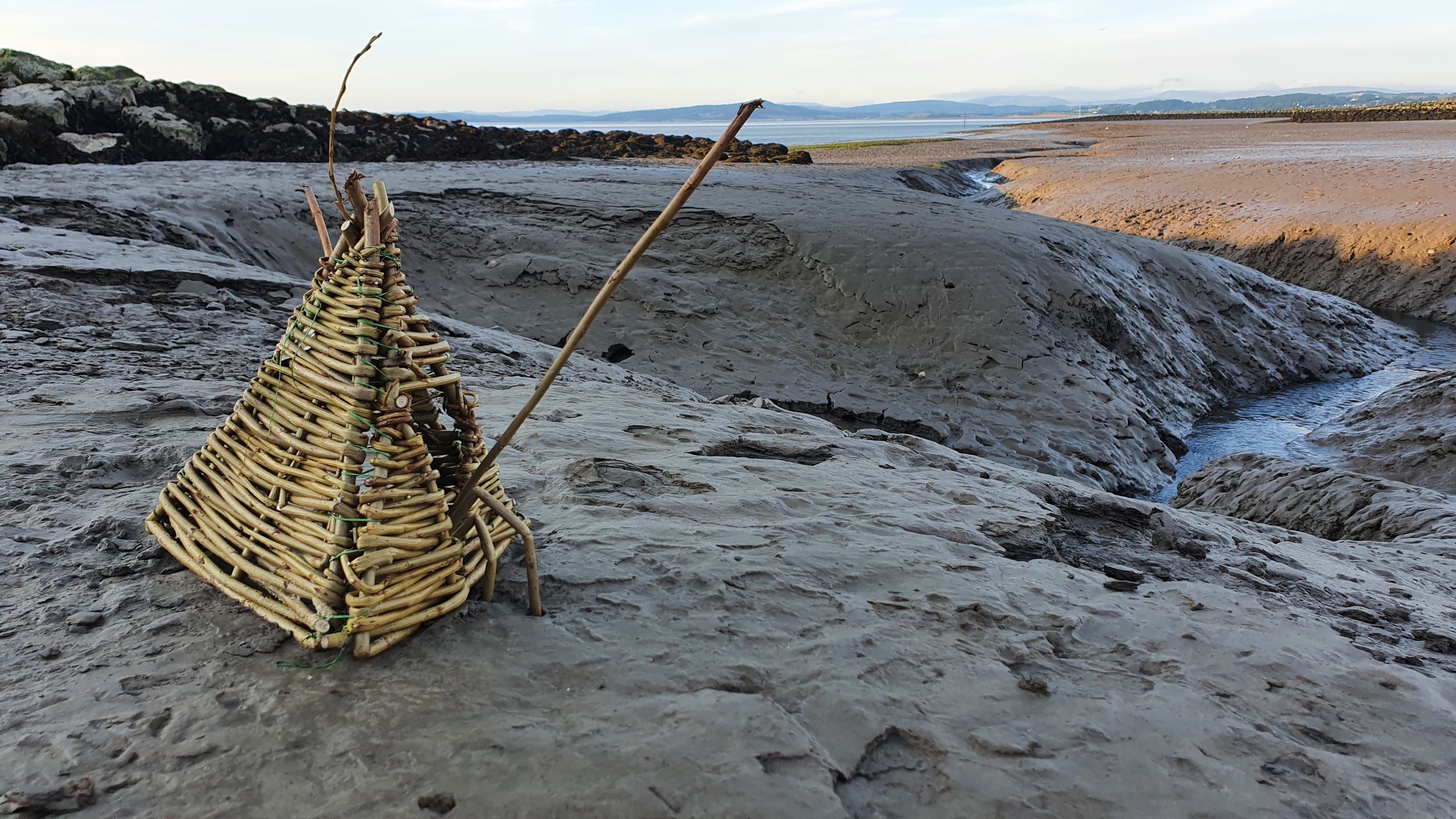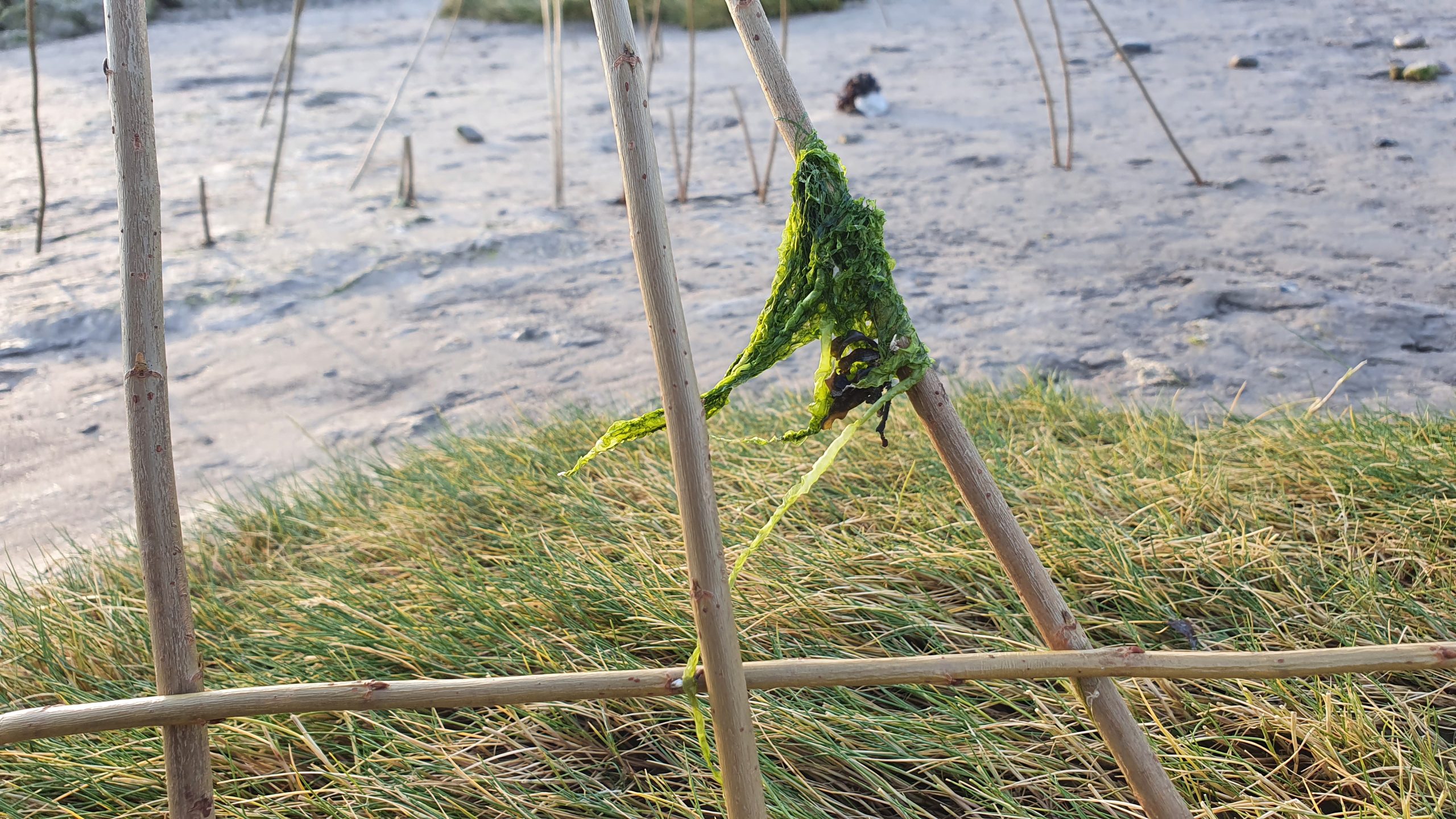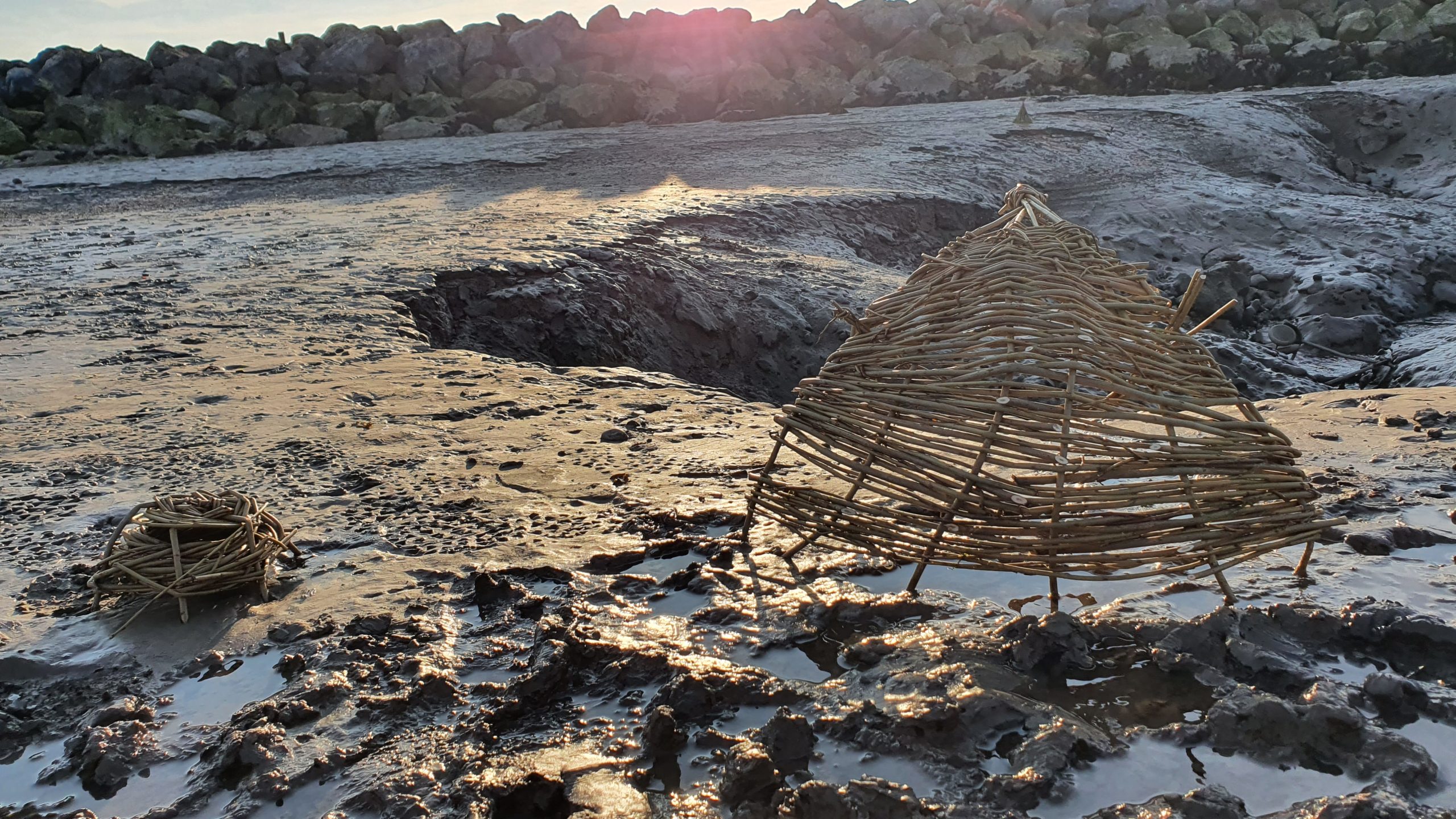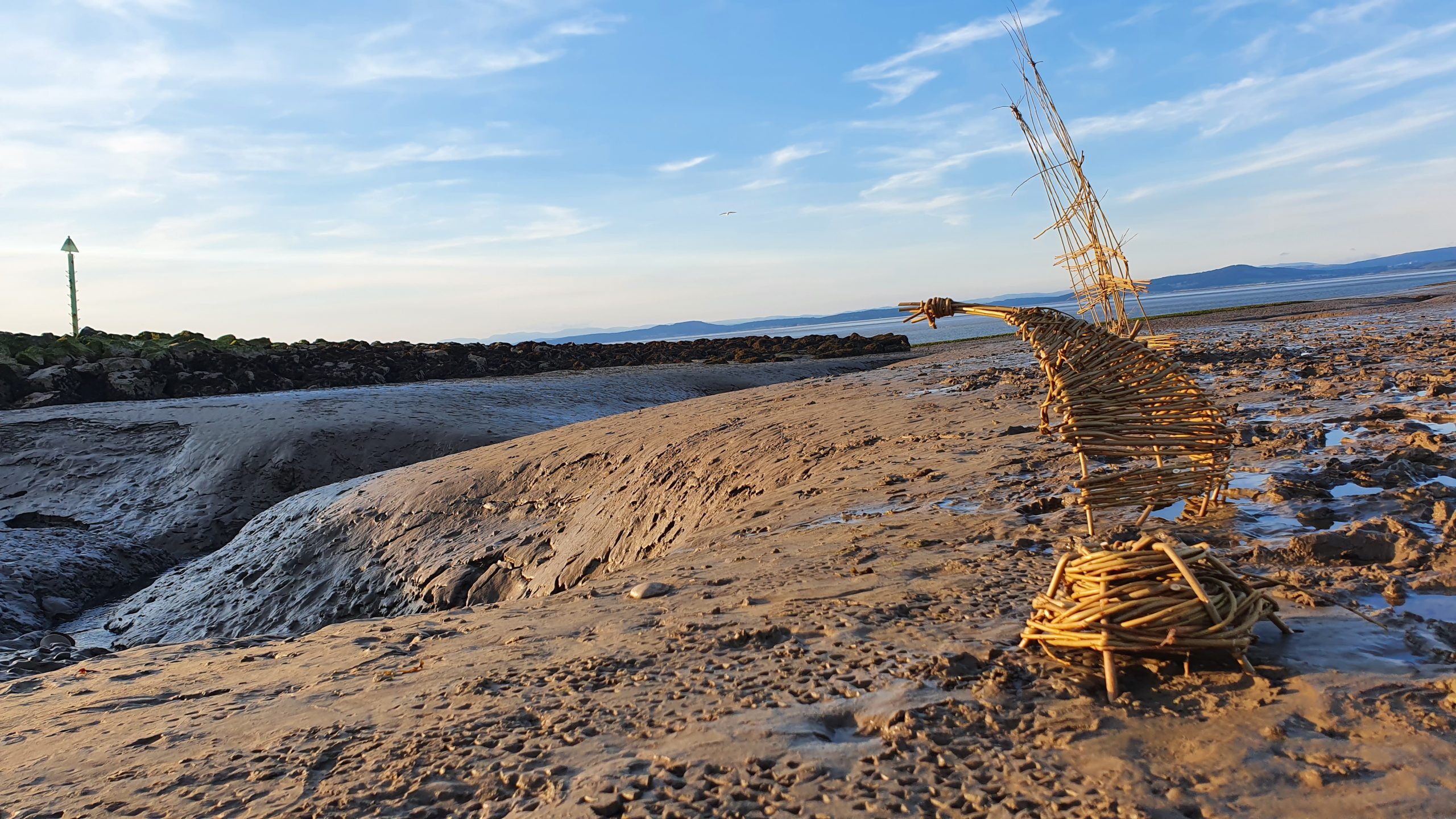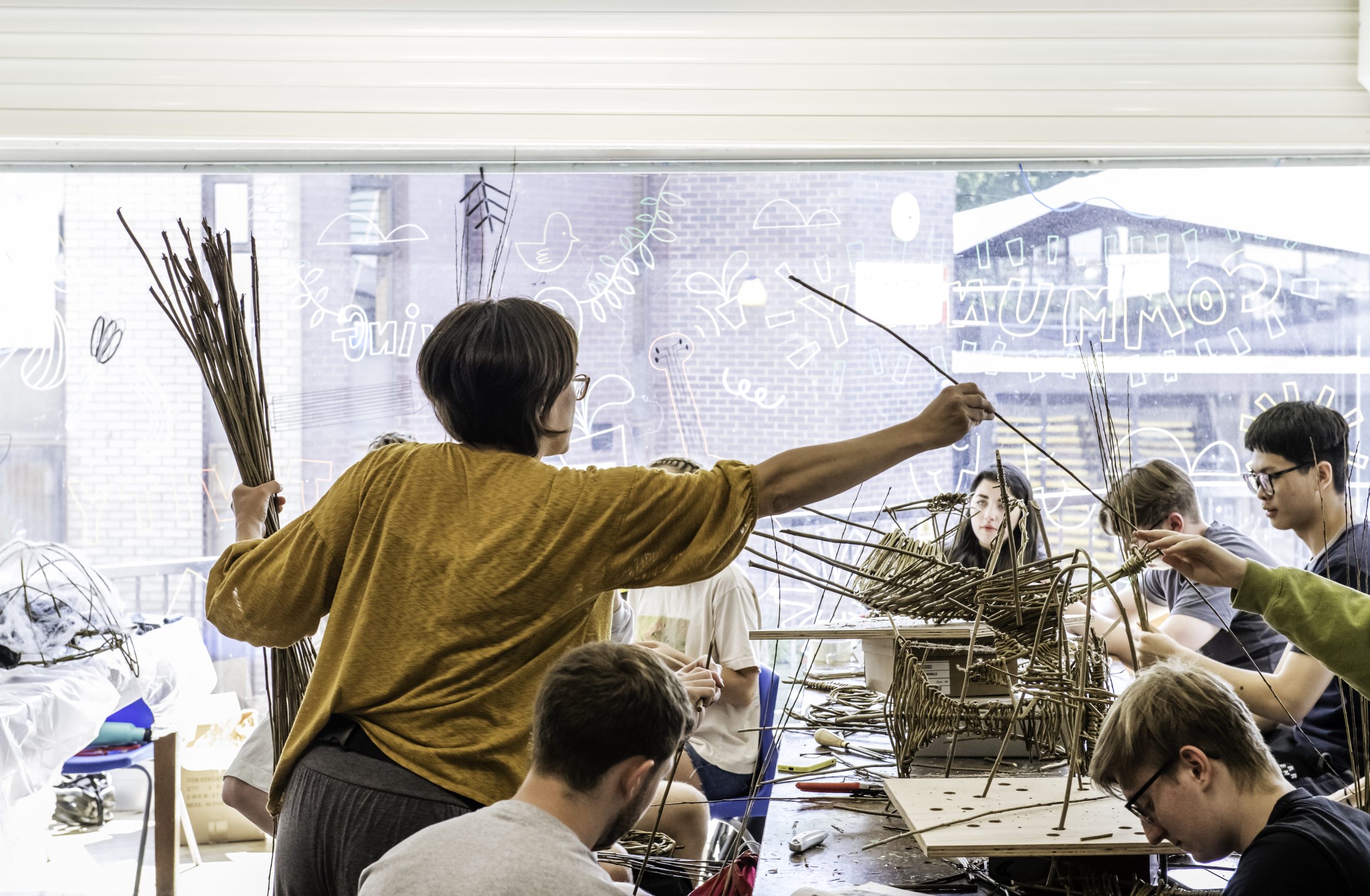Architecture between the tides was a 3-day workshop delivered as part of the Lancaster School of Architecture’s summer school (5-9 June 2023).
This workshop introduced architecture students to the context of intertidal areas, as shifting landscapes and sites of complex multispecies interactions.
In this workshop, we discussed and experimented with ways in which architecture can engage with such dynamics and interactions to promote coastal adaptation and healthy habitats for humans and non-humans.
We did so through experimental, hands-on activities which will involve working with natural materials to prototype structures that will be left on the beach overnight and revisited a day later to observe the results of their interaction with the environment.
Project Brief (as proposed to students)
What if we changed the way we design infrastructures for flood protections to account for the complex entanglements of intertidal nature?
In this workshop you will be asked to explore the properties of natural materials (wool, willow, and any material you may find on the beach) and their potential to be manipulated to build structures enhancing coastal protection and biodiversity richness. Specifically, you will be building structures for saltmarsh regeneration and rockpools.
On day 1 you will be given a general introduction of the context and the research area that this workshop contributes to. We will then have a brief brainstorming and idea generation session. You will then work in teams to develop and prototype concepts for felted rockpools.
On day 2Dr Gloria Castro, a researcher at Strathclyde University, will join us to demonstrate how we can use bacteria to calcify material to promote strength and cohesion. We will use this technique to calcify the woollen rockpools you designed on day 1. On the same day, Amy Gunawan, a local basket maker, will deliver a willow weaving workshop, in which you will learn the craft techniques you will use to weave the structures for sediment accretion that you will install on day 3.
We will start day 3 by installing the structures on the beach. We will document the process through one low to high tide cycle, noticing how structures respond to the elements. We will then present our outputs and findings to the rest of the school on Friday.
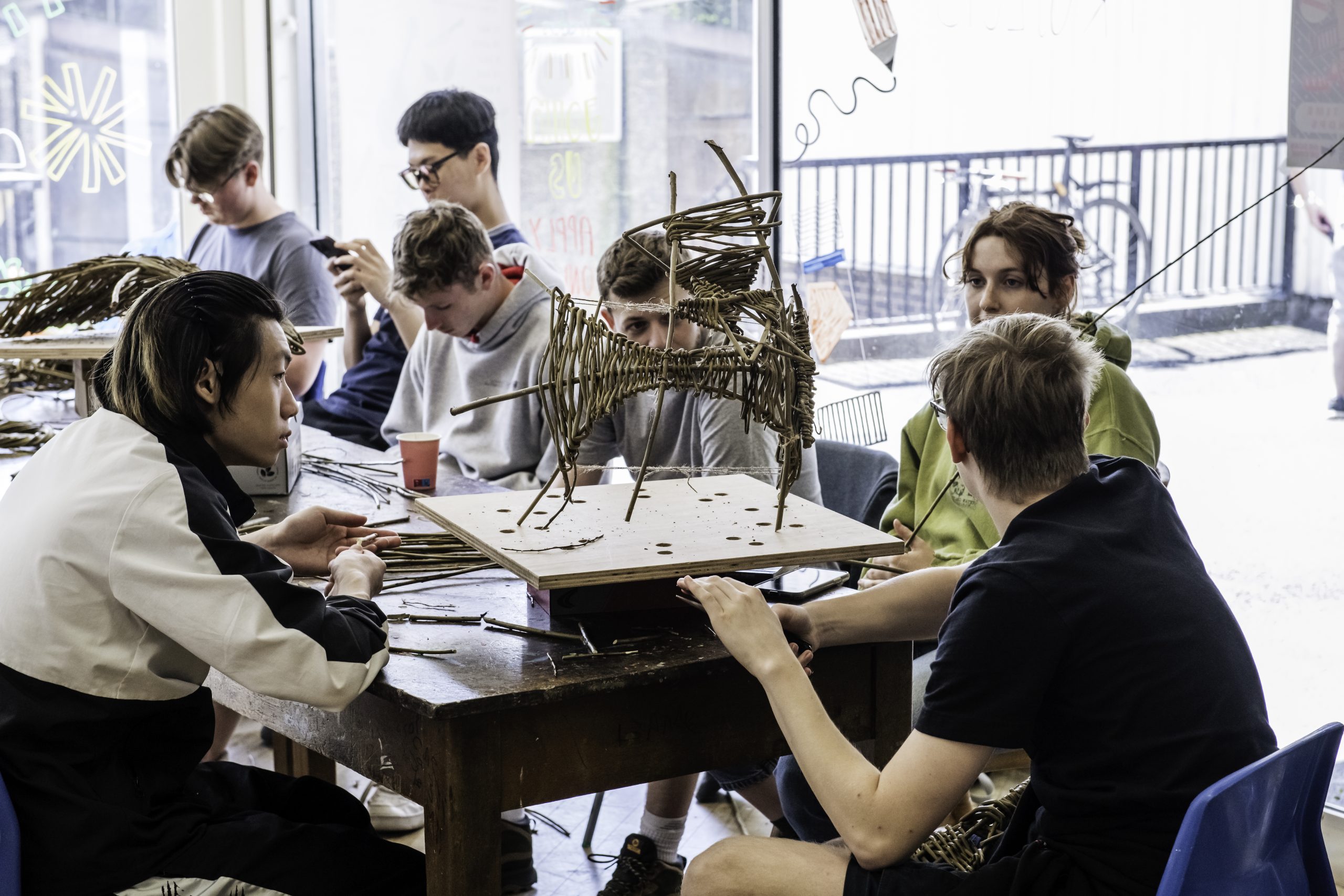
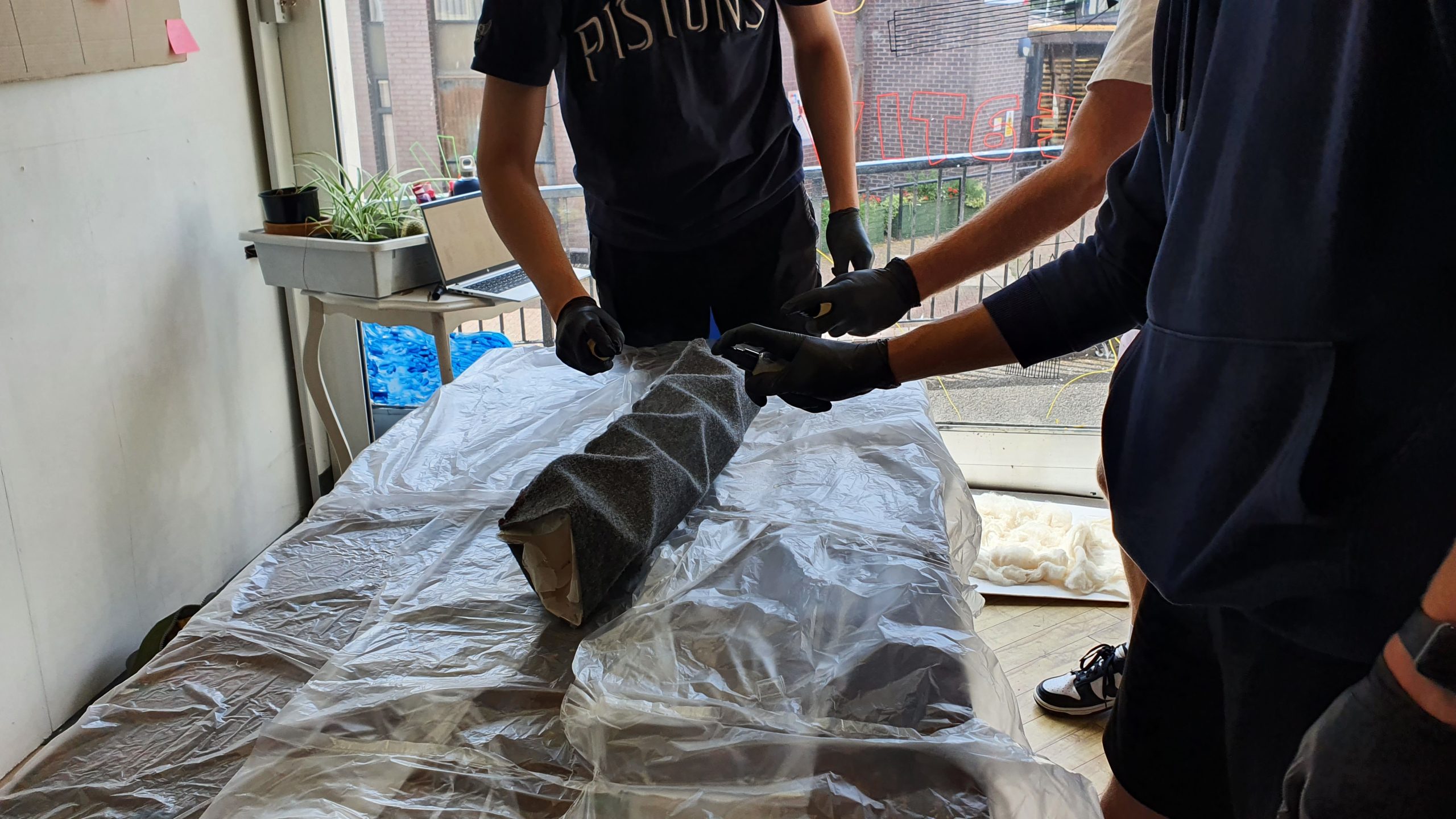
The pictures below show some results from the workshop. The felted structures were brought back to Strathclyde and were used to research the use of MiCP on wool, and the willow structures were left in the sea for a full tidal cycle to get a better understanding of their structural stability and to document any immediate effect.
